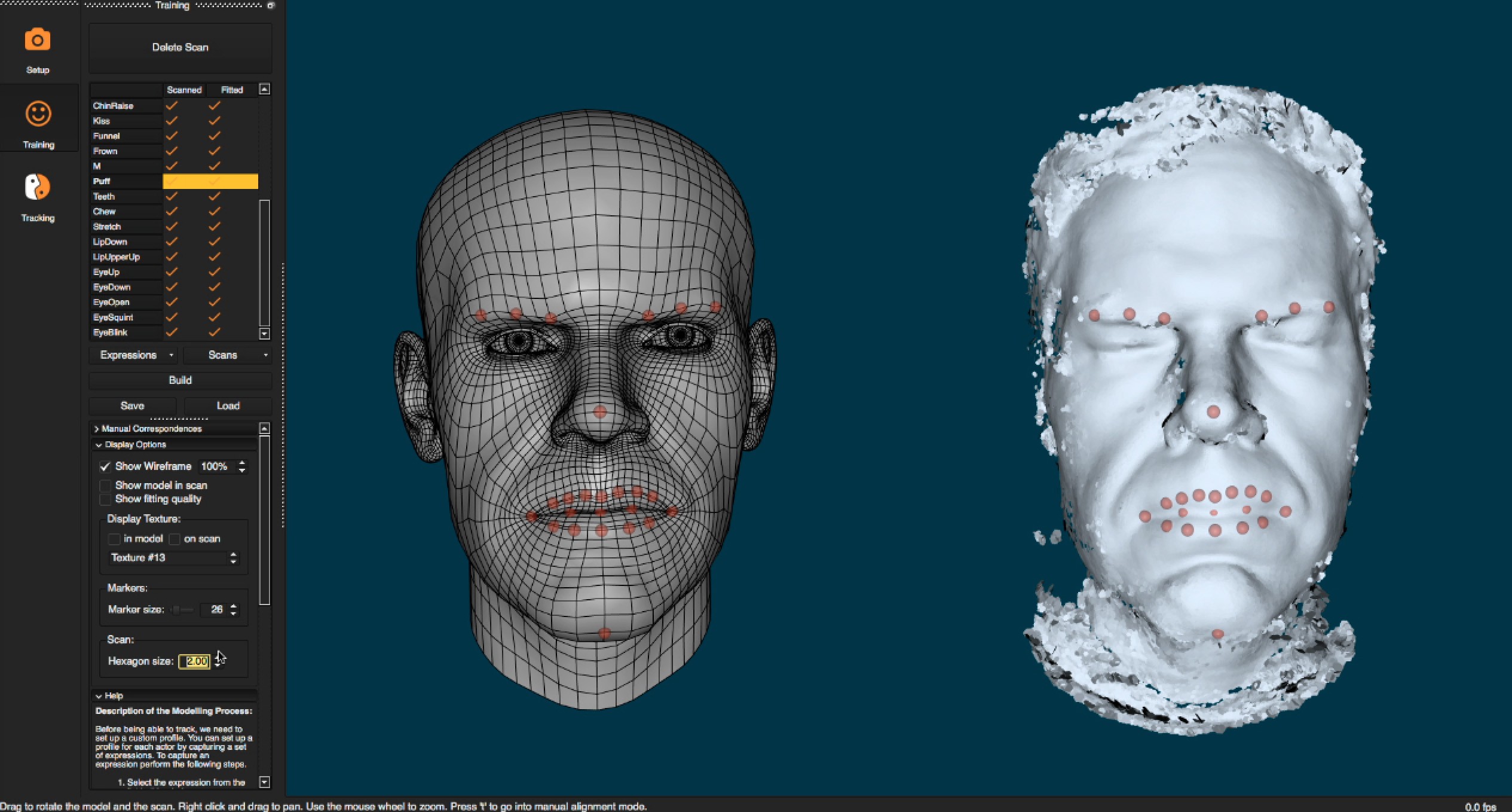Faceshift Mac
Faceshift is an application which allows you to capture facial animations. This application analyzes the face motions of an actor, and describes them as a mixture of basic expressions, plus head orientation and gaze. This description is then used to animate virtual characters to use in movie or game production. This is a demonstration/tutorial on how to import your own models from 3DS Max into Faceshift for motion capture animation and then back to 3DS Max. Apple buys Faceshift, a motion capture company Faceshift’s technology will appear in the new Star Wars, but could also have enterprise or augmented reality applications. Nov 24, 2015 Faceshift's real-time motion capture work in the gaming and chat arena could be used for things like real-time avatars for FaceTime video chats, but there are also more serious applications such.
Rumors had been swirling since September regarding the identity of the purchaser of facial recognition and motion software firm Faceshift, and we finally got the answer on Tuesday, November 24th. It was, as many had surmised, tech titan Apple who snapped up Faceshift, as the iPhone maker finally ‘fessed up to the acquisition after TechCrunch managed to dig up some pretty convincing secondary evidence, including tracking some former Faceshift employees to Apple’s European headquarters.
Apple owns up to Faceshift acquisition
Aside from admitting it was the buyer, Apple would not provide any further color, saying it buys smaller technology companies “from time to time,” but does not discuss its plans for acquired assets in most cases.
When news first came out in September that Faceshift had been bought by an anonymous party, it was noted that one of the new corporate directors taking over control of Faceshift’s IP was an attorney from Baker & McKenzie, a law firm that has helped Apple with quiet takeovers in the past.
The Machine Faceshift Review
Continued from part one... As long as cash continues to flow in from Berkshire’s operating businesses, Buffett expects his conglomerate to continue to reinvest back into the business, rather than paying it out to shareholders: “We expect to continue to diversify while also supporting the growth of current operations though, as we’ve pointed out, our Read More
Faceshift Mac Os

Apparently, TechCrunch and others did some sleuthing to confirm that several ex-Faceshift employees ended up at Apple and now work out of the company’s European offices, and that was enough to convince Apple to spill the beans.
Faceshift had been developing facial recognition software that was used in advanced motion capture technology capable of real-time, low-cost processing. Using 3D sensors and a camera, Faceshift’s new method eliminated traditional motion capture rigging (the stick-on reference markers often worn by actors). Of interest, the Faceshift’s new tech was used to create the human-like movements of faces of some characters in the new “Star Wars” film.

By adding Faceshift, Apple continues to grow its portfolio of facial recognition technology firms, including Swedish firm Polar Rose in 2010 and Israeli company PrimeSense, who were collaborators on the Kinect hardware and software for the Microsoft Xbox, in 2013. The iPhone maker also holds a range of patents in related fields.
What exactly Apple plans to do with its new expertise in facial recognition and motion technology is not clear. Biometric security is one obvious application, but industry experts say the real payoff will probably be in visual effects for games and /or movies.
Faceshift, a Zurich-based technology startup involved in 3D character animation, has been purchased by Apple.
While the amount that the tech giant paid for the startup and its plans for the newly acquired company have not been disclosed, what is clear is that Faceshift specializes in mimicking actor’s facial expressions with 3D avatars and that their technology was recently spotted in the new Star Wars film’s behind the scenes video.
While there were unconfirmed reports of the acquisition published earlier in the year, an Apple spokesperson confirmed the company’s purchase in a customary statement to TechCrunch which read:
Apple buys smaller technology companies from time to time, and we generally do not discuss our purpose or plans.
Several of the virtual reality technology company’s employees are now reportedly working out of Europe on behalf of Apple, according to TechCrunch.
While Fortune cited a Piper Jaffray analyst back in August who suspected–following news of Apple’s $32 million acquisition of an engineering team with multiple VR patents under their belt–that the tech giant might be planning to launch a VR product in the near future, an IHS analyst and gaming specialist, Piers Harding-Rolls, was quoted by BBC as having said that he doesn’t believe the acquisition of Faceshift to be suggestive of any plans for virtual reality.
Instead, Harding-Rolls believes it to be in line with some of their “most recent deals which have centred on machine learning and related technologies such as voice recognition, augmented reality and artificial intelligence” – not to mention, as Harding-Rolls points out, the potential benefit to facial recognition security and communication apps like Apple’s FaceTime.
